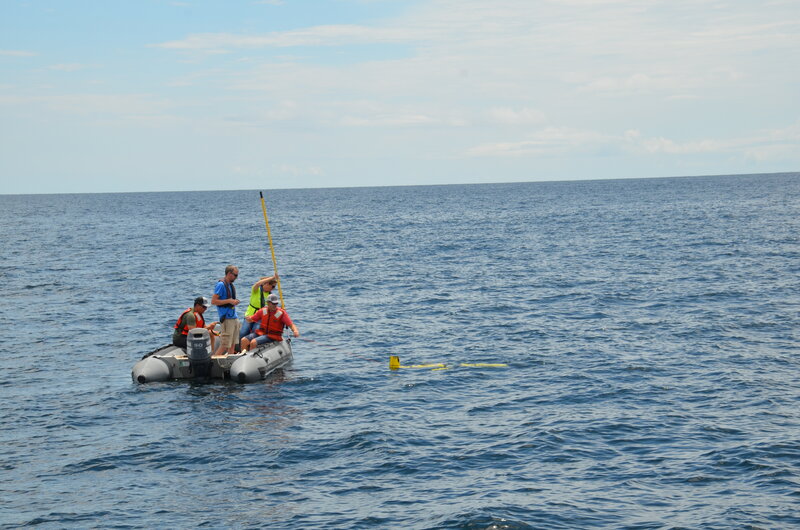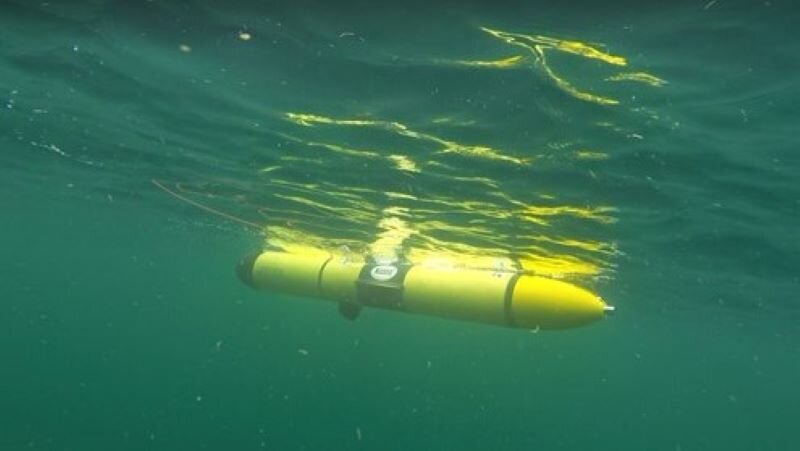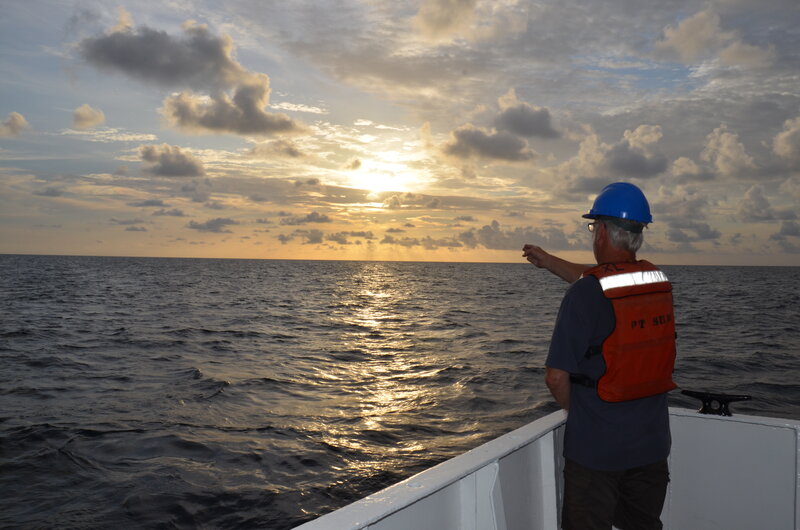
By Lu Wang, NOAA Ocean Exploration
One of the goals of this expedition is to deploy an autonomous glider that transmits data via Iridium satellite during the course of a mission, while the glider is at the ocean’s surface. A key component of glider deployment and monitoring is the incorporation of telepresence so that the shoreside support is able to directly control the glider in real time when it is at the surface. This feature also allows the shoreside team to interact with mission personnel aboard the R/V Point Sur.
Successful deployment, data collection, and retrieval of the glider requires constant coordination and communication between field personnel on the ship and shoreside support based at the University of South Florida. Below is an outline of a typical day of glider deployment on this expedition.
In the morning, an hour before deployment, the field personnel will communicate with shoreside support to go over the planned schedule. Once the R/V Point Sur arrives at the predetermined deployment site, the field personnel team will turn the glider on and wait for shoreside support to confirm that the glider is operating and communicating via Iridium satellite.
Meanwhile, shoreside support will send the glider mission and check that all systems are operating normally. Once the system is ready, field personnel will initiate a test deployment with a tether and float attached to the glider to ensure visibility when the glider is deployed in the water.

The glider team and ship’s crew work to transfer the glider from the R/V Point Sur to a small boat for deployment. Image courtesy of April Cook, Nova Southeastern University. Download largest version (jpg, 7.2 MB).
Shoreside support will continuously run commands to check glider performance in the background and to ensure that GPS data is being logged and is up to date. Field personnel will watch the glider submerge and wait about 40 minutes for it to resurface while maintaining visual contact with the tethered float. When the glider resurfaces, shoreside support will download and analyze all of the glider flight data gathered in the test run to determine readiness of the glider for autonomous deployment.

The glider team on the small boat deploying the glider. Image courtesy of Exploring Migrating Deep-Sea Scattering Layers. Download largest version (jpg, 7.7 MB).
The field and shoreside teams will then communicate to discuss the status of the glider. If all is working according to plan, then field personnel can remove the tether and float and initiate an autonomous deployment. If the glider is ballasted incorrectly, then the field personnel will readjust the weight distribution so the glider can traverse density differences within the water column with ease. If something else is wrong, then the glider will need to be retrieved for further diagnostics. This process can result in several test deployments and rounds of communication between the field and shoreside teams to detect and solve potential problems.

Underwater view of the glider, after deployment. Image courtesy of April Cook, Nova Southeastern University. Download largest version (jpg, 46 KB).
Once the glider is ready, field personnel will deploy it and remain in constant communication with shoreside support to discuss any progress or changes with the glider or ship operations. When field personnel are ready to retrieve the glider, they will notify shoreside support and the ship’s captain. The ship will transit to the glider location and deploy a small boat to bring the glider home.

A member of the glider team, John Horne, keeps an eye on the glider’s position in the distance. Meanwhile, other glider team field personnel are in the small boat, en route to retrieve the glider. Image courtesy of April Cook, Nova Southeastern University. Download largest version (jpg, 6.8 MB).
Published August 4, 2021